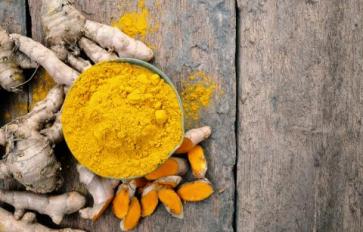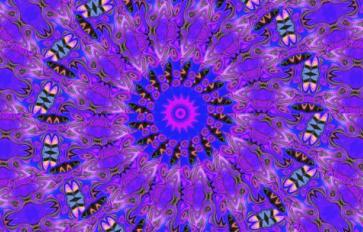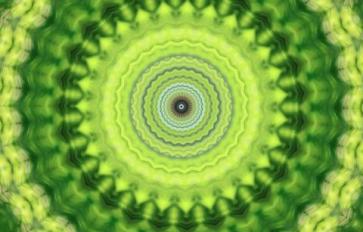
This is a common gesture across cultures. It is most frequently used to express frustration, disappointment, embarrassment, exhaustion, shock, and more.
This sign has even crossed the species divide as it was also observed in the animal kingdom. Zookeepers at the Colchester Zoo in England noticed a group of Mandrills adopting a similar gesture. They used it to signify their desire to be left alone.
This gesture has even found its way to the Internet world, becoming a popular meme to denote the same emotions.
So how can a move that expresses frustration and exasperation be a tool in our quest for inner peace?
Well, it seems that this gesture’s origin is instinct. Somehow we intuitively know this gesture helps us to regain our composure. It is popularly used to denote negative emotions, but the true meaning of the gesture has been lost.
It turns out that it has a calming effect on our systems. How so?
I first started to explore this move after learning about it from Joy Phoenix in her clear stress class. Since then I have been using it as a tool, in times of tension.
Why It Works:
The ‘Science’ Behind The Facepalm
In Ayurveda, Vata is in the forehead. Vata is the element of air and ether. It is a sensitive dosha that goes out of balance easily. It is the dosha associated with movement, restlessness, and anxiety. When a Vata imbalance is present it leads to Chitta Vritti or the monkey mind.
The Third Eye Point/ Pineal gland is also located in the forehead. This point is a small endocrine gland, located deep in the center of the brain.
It produces melatonin, which helps maintain circadian rhythm and regulate reproductive hormones. It is also considered to be the seat of higher consciousness and perception. Any imbalance in the endocrine system can become problematic in every part of your body.
A dysfunction of the pineal gland could lead to anxiety. It is also linked to S.A.D. (Seasonal Affective Disorder), depression and fatigue. It can cause excessive sleep, hypertension, and epilepsy. There is even a link to breast cancer.
This point is also called the GV (Governing Vessel) 24 in Traditional Chinese medicine. By touching the skin on the forehead you activate the energy center under it. The stimulation of it can activate the blood flow of once blocked energy to help restore balance.
The Acupuncture point GB14 (Gallbladder 14) is also located on the forehead. In Traditional Chinese medicine, it is known as the decision-making and judgment point. Dysfunction in the gallbladder leads to frustration and chaos. When healthy it brings optimism, confidence, hope, order and self-assertion.
The frontal lobe is the part of the brain that controls problem solving. It is also associated with emotional expression, memory, language, judgment and sexual behavior. It lies just beneath our foreheads. Applying pressure to and manipulating the forehead can help to release 'feel good hormones'. This process allows Cerebral blood flow back into the frontal lobe, thus reducing anxiety and tension.
These are just a few of the reasons why this movement can work for you in times of stress.
How is it done? It is time to look at the method behind the madness. Here’s how you can practice this technique to achieve maximum benefit.
Practice It:
Joy emphasizes making note of your stress levels before and after practice.
- On a scale of 1 – 10, 1 being the lowest level and 10 being the most intense, where does your stress meter fall?
- You may lie flat on your back (recommended), stand or sit for this meditation. Ensuring a straight spine is always best.
- Rest your palm on your forehead, covering the entire area. You can use one palm or place both palms on either side of your forehead.
- Can you feel a pulse on your forehead? If not, lighten the touch until you are able to feel this pulse.
- The pulses may move from side to side. The goal is to have a steady pulsating feeling synchronized on both sides of the forehead.
- Breathe deep, relaxing breaths.
- Keep this position for 2-10 minutes.
- Reassess your stress level on a scale of 1- 10.
- Repeat if necessary.
Long Version:
If you have more time and would like to have a deeper emotional release, you can extend this practice with this visualization aspect. This is a continuation of the short version.
- When you feel the pulse, it is time to move on to the next step. If after 10 minutes you are unable to connect with the rhythm, move on anyway.
- Bring the stressor to your mind.
- Did the pulsation lose its synchronized beat?
- Stay with it and breathe.
- Breathe while you visualize all aspects of the event.
- Ask your higher self the lesson you are meant to learn from this event.
- Rework the event in your mind’s eye as you would have preferred it.
- Stay with it. You are finished with the practice only after you can visualize the event without a negative emotional reaction.
- Breathe deeply.
- Reassess your stress level on a scale of 1- 10.
- Repeat if necessary.
On-The-Go Version
If you are pressed for time, use this version.
- On a scale of 1 – 10, 1 being the lowest level and 10 being the most intense, where does your stress meter fall?
- Rest your palm on your forehead, covering the entire area.
- Breathe deep, relaxing breaths.
- Hold for 1-3 minutes.
- Reassess your stress level on a scale of 1- 10.
Let us explore the benefits you will be able to have by using this gesture in an informed way at just the right moment.
Benefits:
Body:
- Improves circulation
- Reduces muscle tension
- Stimulates brain function
- Relieves frontal headaches
- Helps with various eye problems such as eyestrain, myopia, blurred vision, twitching and more
- Helps prevent wrinkles
- Facilitates blood and lymph flow
- Makes skin firm
- Activates the amygdala nucleus -- this affects the lymphatic system helping with the removal of nervous tension and negative metabolism products
- Helps relieve stiff neck
- Helps regulate your circadian rhythm
Mind:
- Calms the mind
- Improves focus
- Makes ideas become clearer
- Improves decision making and judgment
- Helps build courage
- Improves creativity and imagination
- Improves mental flexibility
Spirit:
- Increases intuition
- Enhances the ability to sense energy
- Facilitates lucid dreaming
- Increases perceptiveness
“We have two eyes to see two sides of things, but there must be a third eye which will see everything at the same
time and yet not see anything. That is to understand Zen.” -D.T. Suzuki
Photo Credit: "Face Palm" by Bruce Duong is licensed under CC BY 2.0







